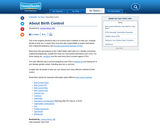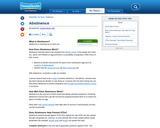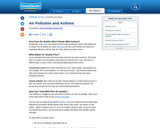
Students learn information to help students set and reach goals.
- Provider:
- KidsHealth
- Author:
- The Nemours Foundation
- Date Added:
- 06/24/2019

Students learn information to help students set and reach goals.

Students learn about sleeping better. Most teens need about 8« to more than 9 hours of sleep each night. But about 1 in 4 teens has trouble sleeping. Lack of sleep can affect everything from our emotions to how well we focus on tasks like driving. It can affect sports performance, increase our chances of getting sick, and may be linked to weight gain in some people. How can we get the sleep we need?

Students learn about safety when eating including how bacteria can make you sick.

Students learn how to deal with the loss of a loved one.

Students learn 5 strategies that teens can use to fight the feelings of depression. This article would serve as a great resource to open discussion on how students personally deal with feelings of depression. This article allows students to hear or read the information provided. I

Students learn about five ways to reach and maintain a healthy weight including exercise, reducing screen time, watching out for portion distortion, eating five servings of veggies and fruits a day, and why not to skip breakfast.

Students learn how to stay healthy during the holiday season by staying relaxed, getting plenty of sleep, and eating healthy.

Students learn the best way to prevent pregnancy and STDs is abstinence, as well as, different means of birth control for couples to protect themselves if they do decide to have sex.

Students learn about everyday stress, difficult life situations, and serious stress.

Students learn about abstinence. The following topics are covered: ?What Is It? ?How Does It Work? ?How Well Does It Work? ?Protection Against STDs ?How Do You Do It?

Students learn the answers to the following questions; What Is Abuse? Recognizing Abuse Why Does Abuse Happen? What Are the Effects of Abuse? What Should Someone Who's Being Abused Do?

Students learn about abusive relationships with emphasis on what healthy relationships involve, what abuse is, signs of abusive relationships, signs that a friend is being abused, how you can help yourself, and where to get help. This is a supplemental article that students can read or listen to.

Students learn about the ozone and how poor air quality affects people with asthma.

These activities will help your students understand the dangers of drinking alcohol.

The cultural definitions of beer, liquor, drinking, and drunkenness are complex and often positive. As your students form their own interpretations of alcohol and make decisions, you can increase their understanding of the substance, its health effects, and the cultural influences around them. The discussion guide includes discussion questions and student activities.

Students learn about puberty, the female reproductive system, and the menstrual cycle.

This resource discusses how to safely operate all-terrain (ATV) vehicles.

Students learn about what it feels like to love, what makes a healthy relationship, what's an unhealthy relationship, warning signs, and why some relationships are difficult. Sutdents can either read or listen to the article.

Students learn about the causes, symptoms, and treatments for anemia.

Students learn about the different types of body sprains. It outines causes, treatments, and prevention for this common injury.